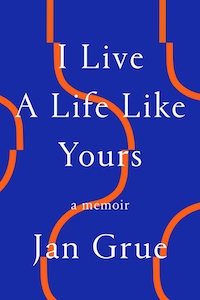
Seeing Yourself in the Gaze of Others: On Disability and the Freedom of Youth
Jan Grue Navigates the Social Politics of Visibility
I was an indignant child. I am indignant still. This was the source of my indignation back then: someone else knew best. Near-stranger adults, the presence of whom I cannot shake off of me. This is still the source of my indignation: intentions I am unable to call good, unable to accept as anything other than a desire for power, desire to control. I was a child who was almost never alone.
To be a child is to be blind to one’s self, it is to be unfettered in the world. To exist in the eyes of others is to be visible. Having to see one’s self from the outside is having to gain control over one’s self.
What has a child been doing all day long? Nothing. That is the answer to the adults’ question. For this reason, a child cannot do nothing while adults are looking on. One cannot do nothing under the gaze of another person, an adult person.
The gaze of others is disciplinary.
The gaze of others, the adult gaze, makes time more visible. The time from here to there. The time between the hours, the school hours. A minute of spare time becomes a minute of waiting, several minutes of waiting. Walk back and forth between the desk and the wall, pull a book off the shelf. Sit down at the desk. Stare out the window. The minutes pass, though they do not seem to. Dream of being unfettered in the world. Dream of being free.
*
Am I romanticizing things now? Are there perhaps children somewhere in the world who do not seem to notice when adults are looking on, who live blissfully, unrestricted?
Of course, I am romanticizing things. I am writing about what I dreamt of then, and what I still dream about today: absolute freedom of movement. Away from the restrictions of language, away from the restrictions of the body.
I sometimes gained admittance to this room, every now and then. For me, it is a concrete space, an experience, like being immersed in water.
Every Saturday, my family and I went to Berg Gård, a community center on the outskirts of north Oslo. There was a heated swimming pool in the basement, and Saturday morning was our time to visit this swimming pool, to be absolutely free.
In the pool, I did not have to worry about falling; in the pool, I did not have to worry about being clumsy. I was not a good swimmer, but I mastered a kind of doggy paddle. I am still a master at this technique. I hope I never fall into the ocean, but I feel intuitively at home immersed in calm, heated water. In the pool at Berg Gård, I was light enough to jump, strong enough to stand on one foot, lithe enough to spin. There, I could be free.
Once I began attending school, I would go to this pool while the others went to gym class, and then these visits took on another tone. I was not the only child who was driven to the swimming pool in a minibus. There were other students too, children from the special ed classes, children who were really different. Not different like me; these children drooled and shouted and lashed out. Children who I could not be like, I couldn’t possibly be like them, no one could think that I was like them, could they? This was a new form of indignation, and a new form of moral experience.
Even one who is weak may despise weakness.
*
The struggle for starees is how to look back.
–Rosemarie Garland-Thomson
California is a space, a time, an arena where I learned a new language. I first traveled there in 2005, and have since returned several times because it is a space I can go to think, a space where I am able to envision myself.
I began to get a glimpse of which we I was a part of. Rosemarie Garland-Thomson writes about the paradoxically shared experience of being different. Those of us who stand out are a we, and we know it.
To be stared at, gawked at, is to develop an external sense of one’s self, a sense that is always premodulated to the expectations of the surroundings.
When I first wrote about these things, I was a research fellow. I wanted to understand myself, but from a safe distance. I leaned on academic language, academic categories.
I found common ground, fellowship, among interviews I conducted with people from a variety of different associations, people with very different bodies, different problems, different illnesses. They knew who they were in the world, and who resembled them. One of them said, “No one wants to know about this, about this side of reality.” But some of us don’t have a choice. We see the gaze of others directed toward us.
Mark O’Brien was a wheelchair user until he died; I am still a wheelchair user, and will be for as long as I live. We had our weakness in common. To be weak is to be subjected to the will of something else, of another person, or of an institution, but it is also to be visible to the other, to be, as they say, subject to another’s gaze. This is what Rosemarie Garland-Thomson writes about when she writes about staring.
To be stared at, gawked at, is to develop an external sense of one’s self, a sense that is always premodulated to the expectations of the surroundings. It is also to be situated in a narrative that has already been written, and that is told by others.
*
Mark O’Brien was stricken with polio. One coincidence was to be born before the polio vaccine was widely developed. My muscular disease is the result of another coincidence, which is itself the result of variations in the human genome. Life is also this.
There was no way of predicting it in 1981, the year I was born, not in the way that things are predicted today. Some conditions hidden in the genome can be identified. As I write this, an old dream has come one step closer to reality, the dream of cutting the mutations out of an embryo by editing its genetic code, a process not unlike the way I have edited this text. At the same time, life is unpredictable, mutations occur spontaneously; from a certain angle, it is precisely this unpredictability that is life. There is grandeur in this view of life, wrote Charles Darwin. I am mutating the meaning behind his words, ever so slightly, I am attempting to make them my own.
The consequences of the two conditions, the viral sickness and the genetic sickness, both fall into the category of physical weakness. The medical gaze, the genetic gaze, the clinical gaze: all perceive clear differences between these conditions. The world, on the other hand, does not. The world perceives a body with frail arms, legs locked into certain angles, the world sees a thin body in a large, bulky wheelchair. I surprise whenever I stand up, I shock when I take a step. Aren’t all wheelchair users paralyzed from the waist down, what miracle is this?
It is not that easy. No pathological picture resembles another one perfectly. Diagnosis is not fate. But it’s easy to believe that it is. It’s easier not to look too closely. What is this gaze, which is so sharp and penetrating, but simultaneously dull and disinterested, that separates things that should not be separated and at the same time mistakes one thing for something very different?
I cannot step outside myself, I cannot fully become the normality that stares at difference. But I can try. And in the attempt something else might arise, something unpredictable. I wish to know who I no longer am, what country I’ve left, so that I can understand where I find myself now, which course I have set. I would like to know who I was expected to be, in order to more clearly see who I became.
*
Gaze and power share a long history. Rosemarie Garland-Thomson writes in the tradition of Foucault, who described the institutional gaze, the clinical gaze, and what happens to those of us who are subjected to such scrutiny.
I cannot step outside myself, I cannot fully become the normality that stares at difference.
In science fiction films and space operas, the enemy ship has a tractor beam, a ray of light that shoots out and immobilizes, captures. The flying saucer then pulls in the captivated object; experiments commence soon thereafter. I have to remind myself that this is an image, a metaphor. This might be because I myself have been a cybernetic organism, a cyborg, in the expanded sense of the word, from the time I got my first wheelchair. Between my organic body and the machine in which I maneuver myself every day there is a blurry line, my pulse quickens whenever something or someone bumps into the wheelchair, it is an instinctive reaction. It requires little effort on my part to see the reality in stories where other people see pure fantasy and wild thought experiments.
Institutions stare at individuals, subjecting them to their control. Foucault’s most popular image, employed to illustrate this control, this surveillance, was borrowed from Jeremy Bentham, the father of utilitarianism. It is the panopticon.
In the panopticon, which was supposedly Bentham’s idea of the perfect prison system, guards sit at the hub of a large, circular structure with an uninhibited view of the cells comprising the wheel. The prisoners never know when they are being observed and therefore must adapt all of their behavior as if they are always being observed. This is the central point. The gaze is ceaselessly disciplinary. It steers the body’s conduct via the mind. One knows that one is being watched, therefore one behaves as one should. This was the disciplinary model for the prison system of the 1800s, it is the model for our school systems today, as well as for countless other institutions.
I was not an institutionalized child. No more so than any other kindergarten or primary school child. However, I was constantly in contact with institutions that do not exist for everyone. I have memories of being examined by doctors and physiotherapists. I am six, seven, eight years old in these memories, in rooms that are a little too cold, in my underwear. Someone is touching the muscles of my arms and legs. I am instructed to walk from one end of the room, turn, and walk back. I know that I am being observed, I don’t know why. Then my parents and I go home.
There is something strangely fragmentary and particular about these episodes, these memories, they don’t have the same fluid, timeless quality as other memories from my childhood, at home, or at the cabin, in which countless days, all of them resembling one another, have blended and blurred together, have become images rooted to a place that grows fuzzy around the edges, in which everything that happens takes place over the course of one single, eternal summer’s day.
__________________________________

Excerpted from I LIVE A LIFE LIKE YOURS by Jan Grue, translated by B. L. Crook. Published by FSG Originals, August 17th, 2021. Copyright © 2018 by Gyldendal Norsk Forlag AS, Oslo. Translation copyright © 2021 by B. L. Crook. All rights reserved.
Jan Grue
Jan Grue is the author of a wide-ranging body of work in fiction, nonfiction, children’s books, and academic literature, and a professor at the University of Oslo. I Live a Life Like Yours was published in 2018 in Norway, where it won the Norwegian Critics Prize for Literature and was nominated to the Nordic Council Literature Prize, the first Norwegian nonfiction book to be so honored in fifty years.
B. L. Crook is a writer and literary translator. In 2010, she founded SAND, an English literary journal, in Berlin. She led creative writing workshops in the Netherlands for two years before returning to the United States. She lives with her family on an island near Seattle.



















